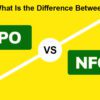

In the current scenario, investing your hard-earned money is essential as it ensures present as well as future financial security. It helps you grow your wealth and generate inflation-beating returns in the long run. With investing, you can lead a financially stable life and benefit from the power of compounding. There are two ways of earning money – by working or by making your assets work for you.
Mutual Funds are a popular option for all types of investors. A lot of investors are aware of the concept but aren’t sure of the complexities of the process as well as the factors to look into before selecting a mutual fund.
Many of them are completely unaware of the process and how to pick the right mutual fund for their portfolio. Before you start investing in mutual funds, we bring you a detailed guide on important things you must know before investing in mutual funds.
What is a Mutual Fund?
A mutual fund is an investment vehicle that uses the money of an investor and invests the same in the stock market-linked financial instruments like stocks and bonds to get returns. The combined holding of the fund is called a portfolio and it is managed by an asset management company.
In mutual funds, the investor puts his/her money in various types of mutual funds based on their risk appetite and duration of the investment. MFs are a tax-efficient, low-cost, and well-diversified way to grow your savings. If you follow the stock market and want to invest in the shares offered by various companies, but you don’t have the right kind of knowledge or time to do so, mutual funds are the best option for you.
You can see a mutual fund as a company that brings together a large number of people and invests their money on their behalf in particular schemes. As an investor, you will own a share of the mutual fund, which will represent a portion of its holdings.
Investing in mutual funds is different from investing in stocks. Unlike stocks, mutual fund shares don’t give any voting rights to their holders. A share of a mutual fund represents investments in different securities or stocks instead of just one holding.
Each mutual fund has one or more fund managers. These managers are selected on the basis of their knowledge or expertise in a particular domain.
What are the Different Types of Mutual Funds for Investment?
Following are the different types of mutual funds based on different parameters:
For Investment Purposes
The mutual funds can be classified into the following schemes:
- Equity Mutual Fund
These types of schemes invest most of the capital of investors into the stock market. Their risk level is high and you should invest based on your risk appetite. The Indian stock market is classified on the basis of its market capitalization which is calculated by multiplying the current market price of a share with the total number of outstanding shares of the company.
Securities and Exchange Board of India or SEBI has defined the following 3 categories based on the market capitalization:
- Large Cap – Top 100 companies in terms of market capitalization
- Mid Cap – 101st – 250 companies in terms of market capitalization
- Small-Cap – 251st company and onwards in terms of market capitalization
SEBI has created 11 categories under the equity scheme, but a mutual fund can have 10 categories and has to choose between Contra or Value fund.
| S.No | Equity Mutual Fund Scheme | Description |
| 1 | Multi-Cap Funds | 65% of total assets – minimum investment in equity and related instruments. In these funds, the capital is invested in companies across different capitalizations. |
| 2 | Large-Cap Funds | Minimum investment in equity and related instruments of large-cap companies has to be 80% of total assets. |
| 3 | Large and Mid-Cap Funds | Minimum investment in equity and related instruments of large and mid-cap – 35% of total assets each. |
| 4 | Mid-Cap Funds | Minimum investment in equity and related investments of mid-cap companies has to be 65% of total assets. |
| 5 | Small-Cap Funds | Minimum investment in equity and equity related instruments of small cap companies has to be 65% of total assets. |
| 6 | Dividend Yield Funds | Scheme should invest in dividend yielding stocks. The minimum investment in equity should be 65% of total assets. |
| 7 | Value Funds* | An equity mutual fund that follows a value investment strategy. The minimum investment in equity and related instruments has to be 65% of total assets. |
| 8 | Contra Funds* | An equity mutual fund that follows a contrarian investment strategy. The minimum investment in equity and related instruments has to be 65% of total assets. |
| 9 | Focused Funds | An equity scheme that invests in a maximum of 30 stocks. The minimum amount of investment in equity and related instruments has to be 65% of total assets. |
| 10 | Sectoral/Thematic Funds | Sector funds invest in stocks of companies that operate in a particular industry or sector of the economy like pharma, rural, banking, infra, etc. The minimum amount of investment in equity and related instruments of a particular theme or sector has to be 80% of total assets. |
| 11 | Equity Linked Savings Scheme (ELSS) | A dedicated scheme that offers an opportunity for long-term capital appreciation and helps them save tax. The minimum amount to be invested in equity and related instruments has to be 80% of total assets. |
*Mutual funds will be permitted to offer either a Contra fund or a Value fund.
- Debt Mutual Fund
This type of mutual fund usually invests in debt instruments like government bonds, corporate bonds, and bonds issued by banks, etc. This is the best option for investors who are not willing to take risk. SEBI has decided a total of 16 categories under this scheme.
| S.No | Debt Mutual Fund Schemes | Description |
| 1 | Liquid Fund | Investment in the money market and debt securities with maturity of up to 91 days |
| 2 | Low Duration Fund | Investment in the money and debt market instruments such that the portfolio duration is 6-12 months |
| 3 | Overnight Fund | Investment in the overnight securities with a maturity of 1 day |
| 4 | Money Market Fund | Investment in the money market instruments with maturity up to 1 year |
| 5 | Short Duration Fund | Investment in the money market and debt instruments such that portfolio duration is 1-3 years. |
| 6 | Ultra Short Duration Fund | Investment in the money market and debt instruments such that portfolio duration is 3-6 months |
| 7 | Medium to Long Duration Fund | Investment in the money market and debt instruments such that the portfolio duration is 4-7 years. |
| 8 | Long Duration Fund | Investment in the money market and debt instruments such that the portfolio duration is more than 7 years |
| 9 | Medium Duration Fund | Investment in the money market and debt instruments such that the portfolio duration is 3-4 years |
| 10 | Corporate Bond Fund | Minimum investment in highest rated corporate bonds – 80% of total assets |
| 11 | Banking and PSU Fund | Minimum investment in Debt instruments of banks, public financial institutions, public-sector undertakings – 80% of total assets. |
| 12 | Gift Fund | Minimum investment in government securities – 80% of total assets (across security) |
| 13 | Dynamic Bond | Investment across duration |
| 14 | Credit Risk Fund | Minimum investment in highest rated corporate bonds – 65% of total assets |
| 15 | Floater Fund | Minimum investment in floating rate instruments – 65% of total assets. |
| 16 | Gilt Fund with 10 years constant duration | Minimum investment in Gsecs – 80% of total assets such that the duration of the portfolio is equal to 10 years |
- Hybrid Mutual Fund
This fund invests the money into equity, debt, and other related instruments. This is a diversified mutual fund that has a perfect balance between risk and returns on investment and is a popular type of mutual fund.
There are seven categories under the hybrid scheme as per SEBI:
| Serial Number | Hybrid Mutual Fund Scheme | Description |
| 1 | Conservative Hybrid Fund | It mostly invests in debt instruments. 10-25% of total assets in equity-related instruments and 75-90% of total assets in debt instruments. |
| 2 | Aggressive Hybrid Fund* | It mostly invests in equity and related instruments. 65-80% of total assets in equity-related instruments and 20-35% of total assets in debt instruments. |
| 3 | Dynamic Asset Allocation or Balanced Advantage Fund | A hybrid mutual fund changes its equity exposure based on the condition in the market. |
| 4 | Arbitrage Fund | It follows an arbitrage strategy. The minimum investment in equity and related instruments is 65% of total assets. |
| 5 | Multi-Asset Allocation | It invests in a minimum of 3 asset classes with a minimum allocation of 10% each, in all 3 asset classes. Foreign investment is said to be a separate asset class. |
| 6 | Balance Hybrid Fund* | 50-50% investment in bet and equity instruments. In this scheme, no-arbitrage would be permitted. |
| 7 | Equity Savings | This scheme invests in arbitrage, debt, and equity. The minimum investment in equity-related instruments is 65% of total assets and the minimum investment in debt is 10% of total asset. |
*Mutual Funds will be allowed to offer either a Balanced Fund or an Aggressive Hybrid Fund.
- Solution-Oriented Scheme
This scheme has 2 categories of mutual funds. Following are the categories:
| Serial Number | Solution-Oriented Mutual Fund Scheme | Description |
| 1 | Children’s Fund | This scheme has a lock-in for at least 5 years or till the child attains maturity or whichever is earlier. |
| 2 | Retirement Fund | This scheme has a lock-in period of at least 5 years or till retirement age, whichever is earlier. |
5 . Other Schemes
They have the following two categories:
| S.No | Other Mutual Fund Schemes | Description |
| 1 | FoF’s (Domestic/Overseas) | Minimum investment in the underlying fund – 95% of total assets. |
| 2 | ETFs*/Index Funds | For the securities of a particular index, the minimum investment is 95% of total assets. |
Exchange-Traded Fund – ETF
Based on Plan Type
In 2012, SEBI came out with several reforms which covered the introduction of direct plans in mutual funds. From 1 January 2013, each mutual fund in India comes in 2 variants – Direct Plan and Regular Plan.
- Direct Plan Mutual Fund
This is a type of mutual fund where AMC or Asset Management Company doesn’t charge distributor expenses, transaction charges, and trail fees. The expense ratio is much lower. The investor gets an opportunity to get higher returns from the mutual fund despite having the same portfolio.
The direct plan doesn’t charge distribution commission or expenses, resulting in this plan having lower annual charges and eventually, a different NAV compared to the regular plans.
- Regular Mutual Funds
In this plan, mutual funds give a sales commission to the middlemen or brokers, who bring business to them. Generally, mutual funds have been sold via intermediaries and brokers. The commission earned is added to the expense ratio of the fund. Both versions are the same schemes and are run by the same fund managers who invest in the same bonds and stocks. The difference is that for direct mutual funds, there is no distributor or broker commission. This means that as an investor, you gain better returns from the same mutual fund.
Based on the Maturity Period
- Open-ended Mutual Fund – An open-end mutual fund doesn’t have any restrictions on the number of shares a fund can issue. These schemes buy and offer units on a daily basis. They allow the investor to enter or exit as per his/her preference.
Must Read-: What Is the Difference Between IPO and NFO?
- Close-ended Mutual Fund – A close-ended mutual fund has a defined maturity period, e.g. 3-6 years. This fund is open for subscription for a specified time at the launch time. This fund is listed on a known stock exchange.
- Interval Mutual Fund – This fund combines the features of open-ended and closed-ended funds. This fund may trade on a stock exchange and is open for sale or redemption at predetermined intervals on the existing NAV.
How Are Mutual Fund Returns Taxed in India?
The profits that you earn from your mutual fund investments also count as a form of income or capital gains and they are taxed with capital gains tax. The taxation on mutual fund gains varies depending on the mutual fund type or the holding period.
Tax on Mutual Funds Capital Gain
Capital Gain Taxation on different types of mutual funds:
| Type | Long-Term Capital Gain Tax | Short-Term Capital Gains Tax |
| Equity Mutual Funds | 10% without Indexation | 15% |
| Balanced Mutual Funds | 10% without Indexation | 15% |
| Debt Mutual Funds | 20% after Indexation | As per tax slab of an individual investor |
Holding Period in Mutual Funds
Capital Gains can be STCG (Short-Term Capital Gain) or an LTCG (Long-Term Capital Gain) depending on the holding period of the fund. Tax on capital gain is called Capital Gain Tax.
Following are the holding period for different types of mutual funds:
| Type | Short-Term Holding | Long-Term Holding |
| Equity Funds | Less than 12 months | 12 months and more |
| Debt Funds | Less than 36 months | 36 months and more |
| Balanced Funds | Less than 12 months | 12 months and more |
Things to Look for Before Investing in Mutual Funds
Following are the 15 basic parameters to look for before investing in mutual funds:
| 1 | AMC | Asset Management Company or AMC runs a mutual fund. Reliance Mutual Fund, HDFC Mutual Fund, etc. |
| 2 | AUM | Asset Under Management or AUM is the total fund a mutual fund scheme holds for investments. |
| 3 | RATING | It’s a score that is given to a product after the assessment or evaluation of securities based on multiple factors. It is a crucial step in choosing a mutual fund scheme. |
| 4 | NAV | Net Asset Value or NAV is a fundamental of loss and gains in mutual funds. When the profit of funds increases, the NAV grows without any change in the allocated units. |
| 5 | Expense Ratio | It is defined as the total operating expenses divided by the total value of assets under management (AUM). |
| 6 | Entry Load | Entry load is charged when an investor makes an investment in the mutual fund. It is the percentage added to the prevailing NAV at the time of investment. |
| 7 | Exit Load | It is charged at the date of redemption and its value depends from fund to fund. The money deducted in the form of the entry load, exit load, and sales charge goes directly to the AMC and not the mutual fund. |
| 8 | Risk | It means uncertainty in investment. It is the deviation from the expected or standard value. Each mutual fund is rated against the risk associated as per its asset allocation. |
| 9 | Returns | It is a profit or loss on an investment. It is the change in principle or value amount. In the case of mutual funds, we check 1Y, 3Y and 5Y return. |
| 10 | SIP Minimum | It is the minimum investment amount needed to invest in the mutual fund every month as SIP. The amount is decided by the AMC. |
| 11 | Launch Date | It is the date on which a mutual fund is launched. It is easier to judge an old fund based on its performance. |
| 12 | Fund Manager | The person who decides where and how to invest your money in the mutual fund. The performance of a mutual fund depends on its fund manager. |
| 13 | Lock-In Period | This is a period for which the investment cannot be taken out or withdrawn by the investor. ELSS or Tax-saving Mutual Funds have a lock-in of 3 years. |
| 14 | Holdings | These are the contents of an investment portfolio held by a mutual fund. These are the names of the companies whose bonds or shares are bought by the scheme. |
| 15 | Benchmark | This is something to compare against your returns. The popular benchmarks are Nifty and Sensex. |
The Best Time to Withdraw Your Money From Mutual Funds
The following table will give you an idea of the ideal investment duration and expected returns from different types of mutual funds:
| Fund Category | Investment Tenure | Expected Returns |
| Small-Cap Funds | 7 years and above | 15-20% |
| Mid-Cap Funds | 6 years and above | 15-20% |
| Large-Cap Funds | 4 years and above | 12-18% |
| ELSS | 5 years and above (3 yrs is compulsory) | 15-20% |
| Multi-Cap Funds | 5 years and above | 15-20% |
| Index Funds | Depends on index on which the fund belongs to | Variable |
| Sector Funds | Variable – differs with sector chosen | Variable |
| Liquid Funds | Few Days- Few Weeks | 7-9% |
| Short Term Funds | 1-3 years | 5-9% |
| Ultra Short Term Funds | 6 months – 1 year | 6-9% |
| Income Funds | 1-3 years | 8-10% |
| Monthly Income Plan (MIP) | Variable* | 7-10% |
| Equity Oriented Hybrid Fund | 2-3 years | 10-15% |
| Debt Oriented Hybrid Fund | 2-3 years | 8-12% |
| Gilt Funds | 1+ year | 8-10% |
Note – The returns given here are based on the past performance of mutual funds and do not imply that the same trend will follow in the future.
What are the Modes of Investment in Mutual Funds?
- Lump-Sum – It is a single large investment done by an investor in one go in a mutual fund scheme.
- SIP – A SIP is a fixed sum in a mutual fund scheme in a predefined regular interval.
How to Make Your First Investment?
You can make your first investment via:
- Online Portals – You can invest in different mutual fund schemes across AMCs via several third-party online portals. Most of the portals have tie-ups with banks to ensure easy transfer of funds.
- Intermediaries – They include distribution companies, banks, stockbrokers, and a large number of small and individual financial advisory companies. Each intermediary has to be registered with the AMFI or the Association of Mutual Fund in India.
- Independent Financial Advisers – IFAs or Independent Financial Advisors act as agents to facilitate a mutual fund investment. They help you in filing an application form and submit the same with AMC.
- Directly With AMC – You can also invest in a mutual fund scheme by investing directly via AMC. For the first investment in a mutual fund, you will have to visit the AMC’s office. Some AMC’s provide the facility of sending an agent to assist you in filling the application form, collecting the cheque, and sending the acknowledgment.
- Via Bank – Banks also work as intermediaries and distribute the fund schemes of different AMCs. You can invest into fund schemes directly at your bank branch.
- Via Demat and Online Trading Accounts – If you are an owner of a Demat account, you can purchase and sell mutual fund schemes via this account.
Summing Up
Investing is an ongoing process and requires continuous learning. We have covered all the important things you must know before investing in mutual funds. This detailed guide will help you understand the ABC of mutual funds and will give you a headstart to your investing journey.
Happy Investing!














